12 Spring Lawn Care Tips for South Carolina
BY MELANIE JOSEPH | MAY 25TH, 2023 | LAWN CARE, SOUTH CAROLINAAs winter ends and spring approaches, homeowners in the Palmetto State are gearing up for the annual task of spring maintenance for their lawns. With the arrival of warmer weather, now’s the best time to prepare your lawn for the upcoming season. But even if you’re familiar with South Carolina’s unique conditions, lawn care can still be a daunting task.
To help you achieve a healthy and lush lawn this season, here are 12 spring lawn care tips specific to the climate and soil conditions of South Carolina. These tips cover everything from soil testing and fertilization to mowing and watering techniques.
In this article, we’ll cover:
- Prepare Your Lawn Care Tools
- Test the Soil for Nutrient Deficiencies
- Perform Spring Cleanup
- Water the Lawn Efficiently
- Remove Thatch Buildup
- Aerate Only as Needed
- Mow According to Your Grass Type
- Overseed To Improve Lawn Thickness
- Control and Prevent Weed Invasion
- Fertilize To Support Healthy New Growth
- Kill Lawn Pests Before They Overrun Your Yard
- Treat Lingering Lawn Diseases Before New Growth Starts
Why is Lawn Care Important in the Spring?
Spring is a critical time of year for lawn care, and neglecting your lawn during this season can have significant consequences throughout the rest of the year.
During winter, grass goes dormant and can become weakened by cold temperatures, snow, and ice. So when spring arrives, take proactive steps to revitalize your lawn and ensure it can thrive throughout the growing season. Otherwise, it can lead to a weak, patchy lawn vulnerable to diseases, pests, and drought.
In addition to promoting the health of your lawn, spring lawn care also can have aesthetic benefits. A green and lush lawn is a beautiful addition to any home and can increase curb appeal and property value.
12 Spring Lawn Care Tips for South Carolina
These 12 tips specifically tailored for South Carolina can help ensure your lawn stays healthy, lush, and green throughout the year:
1. Prepare Your Lawn Care Tools
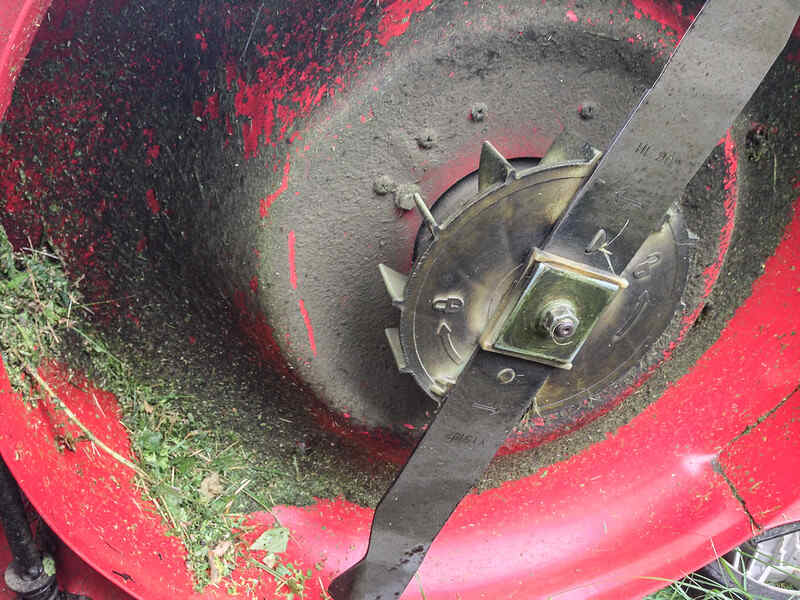
Photo Credit: Tony Webster / Flickr / CC BY 2.0
As spring arrives, it’s time to dust off your lawn care tools hibernating in the garage. Prepare your trowels, loppers, hand clippers, shovel, hoe, lawn mower, and other lawn equipment. Also, check if they’re in top shape before you start working on your yard.
To ensure your tools are primed for action, start by performing a basic maintenance check. This should include the following steps:
- Sharpen your lawn mower blades to ensure a clean, even cut.
- Give your tools a thorough cleaning. Use a stiff brush or cloth to remove any excess debris from the surface.
- To prevent the spread of harmful pathogens, soak your hand tools in a diluted bleach solution or spray them with rubbing alcohol.
- Once you’ve cleaned your tools, dry them thoroughly with a clean cloth and apply a light coating of camellia oil to prevent rusting.
- Verify that your weed eater has an adequate amount of line.
- If you have a battery-powered tool, check if it’s still functioning properly and ensure the batteries are not dead.
- Stock up on fuel, change the engine oil, and replace the spark plug and filter if you have a gas-powered lawn mower.
Complete these tasks early in the season so your lawn care tools will not malfunction or break down and disrupt your yard work.
2. Test the Soil for Nutrient Deficiencies
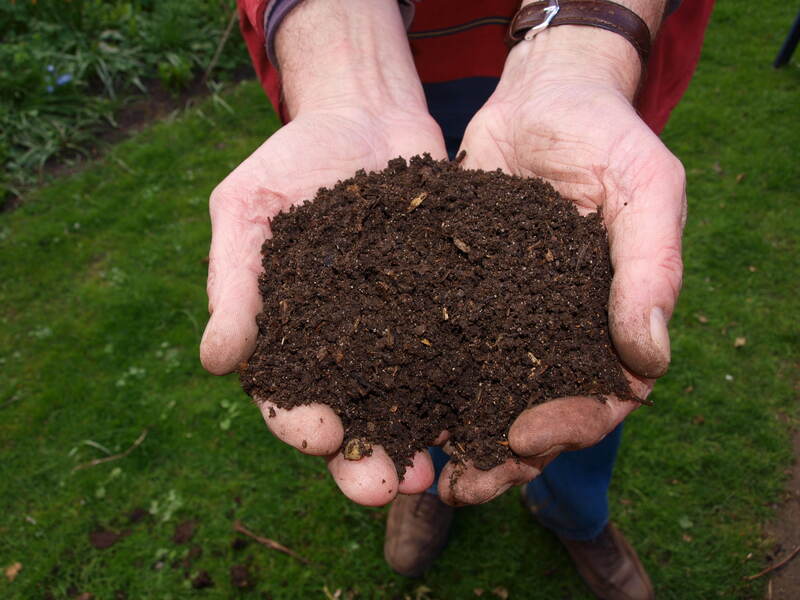
Photo Credit: Pxfuel
Ensuring your soil contains the right mix of nutrients is critical to achieving optimal lawn growth. The soil is the unsung hero of a healthy lawn – providing a foundation of essential nutrients that enable grass to flourish. Even if you fertilize your lawn regularly, a deficiency in key nutrients can limit the full potential of your grass.
But how can you ensure your soil provides the nutrients your lawn needs? The most effective way is to collect a soil sample and have it analyzed by professionals.
Fortunately, Clemson University offers affordable testing services, with soil analysis costing just $10 or less per sample. Once you receive the soil test results, you can ascertain which amendments your soil needs to achieve peak health and nourishment.
For example, lime can be used to adjust the pH of the soil. Other essential nutrients include phosphorus, potassium, nitrogen, and potash. Ensure your soil is healthy and well-nourished so you can set the stage for a thriving, vibrant lawn.
Pro Tip: For lawns with warm-season grasses, they should be tested in late winter or early spring to identify any issues before the growing season starts. On the other hand, soil testing for lawns with cool-season tall fescue should be conducted between June and August, when the grass is actively growing and can benefit the most from soil amendments.
3. Perform Spring Cleanup
After readying your lawn care equipment and receiving your soil test results, it’s time to start your lawn care routine. Spring is the best time to give your yard a thorough cleanup – removing debris and dead branches that have accumulated over the winter. There’s no better way to rejuvenate your outdoor space and prepare it for the warmer months ahead.
- Scour the lawn for large branches and other debris that may have fallen during the winter months.
- Take a closer look at your trees and determine if there are any dead or damaged branches that need to be removed. This will not only enhance the appearance of your trees but also protect your property from potential hazards.
- Next, remove dead or damaged leaves and stems from your perennials, shrubs, ornamental grasses, and trees. Use loppers or hand pruners to tidy up these areas, making way for new growth.
- After clearing the debris, use a blower to remove any remaining leaves or cuttings from underneath bushes, trees, and flower beds.
- Finally, consider using a mulching mower with a bag attachment to collect and mulch any remaining dead material. This mulched material can be added to your compost pile, enriching your soil for future growth.
4. Water the Lawn Efficiently
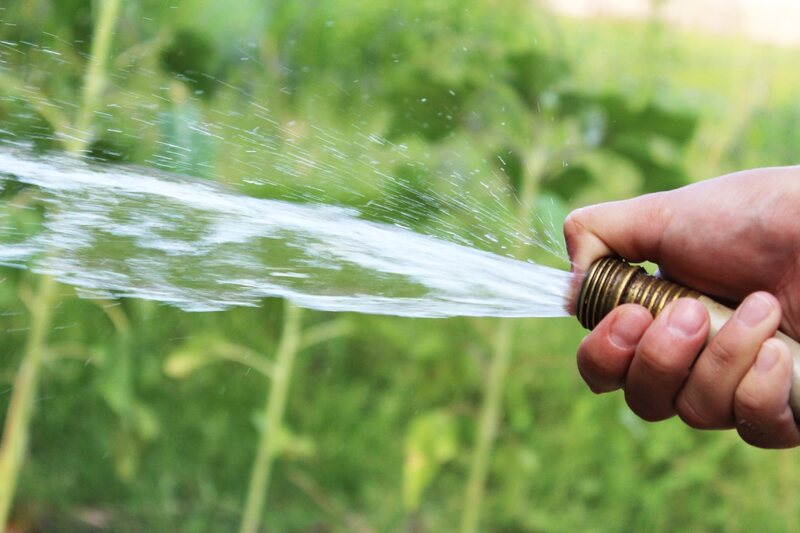
Photo Credit: Pxhere
Spring is a tricky time for lawn care. While it may be tempting to turn on your sprinkler system, hold off for a bit. The soil is still moist, so your lawn doesn’t need watering just yet. And be gentle when walking or using equipment on your lawn, as the damp soil is more prone to damage.
Once you’ve applied the first batch of fertilizer and your grass is actively growing, it’s time to start watering. But be careful not to overdo it. Experts suggest no more than 1 inch of water per week, as overwatering can lead to the following:
- Unwanted fungal growth that can damage your lawn
- Potentially hazardous substances from weed killers, insecticides, and fertilizers can pollute groundwater
- Pesky insects that can harm your grass
- Shallow root systems that can’t absorb enough water, making your lawn more vulnerable to dry spells
- Accumulated dead plant matter that can stifle your grass
Overwatering can cause issues, but underwatering can be just as harmful. Neglected grass that is thirsty will eventually dry up and die. It’s essential to strike a balance and give your lawn the right amount of water.
As the temperatures rise, monitor your lawn’s water intake. Look for the following signs which indicate that your grass needs more water:
- Limp or wilted grass
- Grass discolorations (tan or gray)
- Footprints that remain visible after walking on the lawn
Maintaining the right amount of moisture in your soil is crucial to a healthy lawn. Here’s a quick and easy test to check if your soil is getting enough water:
Step 1: Grab a screwdriver and push it into the soil.
Step 2: If the screwdriver goes in effortlessly, your soil has enough moisture, and you can keep watering as usual.
Step 3: If the screwdriver meets resistance, your soil may be too dry. Try watering more frequently, but don’t go overboard – remember that 1 inch of water per week is enough.
Pro Tip: Take care of your lawn in the spring, but don’t be too eager to jump into heavy yard work. Wet soil can quickly become compacted, causing damage to the roots and other problems. Try to start with lighter tasks, such as pruning, raking leaves, and removing debris. Wait for the soil to get dry before undertaking heavy yard work to ensure your lawn stays healthy and beautiful.
5. Remove Thatch Buildup
Thatch is like a comfy blanket for your lawn, made up of organic debris, dead leaves, and grass blades that accumulate between the soil and the grass. It provides natural insulation and slowly releases valuable nutrients for the grass to use.
But like a blanket that’s too thick, too much thatch can cause problems. It can block water from reaching the roots and create a safe haven for pests and diseases to thrive. To prevent this, it’s best to remove excess thatch once a year.
This process, called dethatching or verticutting, requires a specialized tool like a hand rake or verticutter. Wait until the grass is actively growing and has been mowed several times before dethatching.
For optimal lawn care, time your thatch removal just right:
- For warm-season lawns, you can remove thatch in the spring after green-up or when the grass is growing rapidly in the summer.
- On the other hand, dethatch cool-season grasses in the late summer or early fall.
- It’s best to avoid doing this during hot and dry periods, as this can put additional stress on your lawn.
Pro Tip: Dethatch carefully so as not to damage healthy grass blades.
6. Aerate Only as Needed
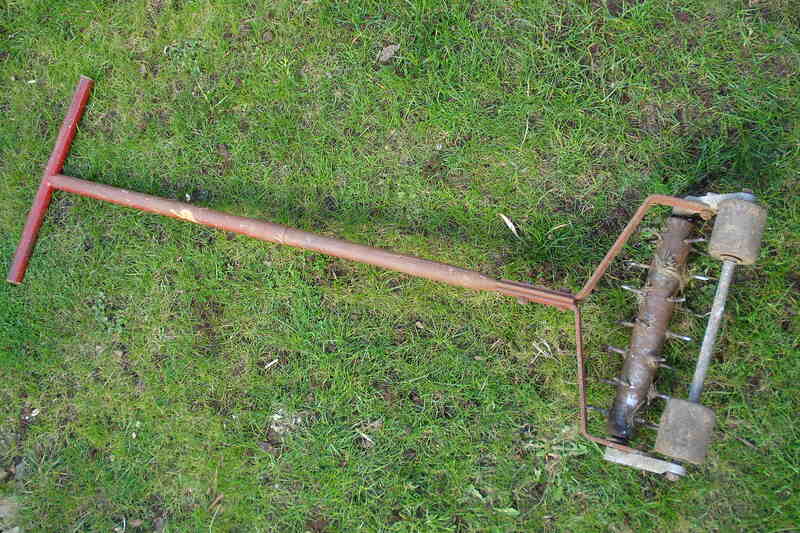
Photo Credit: allispossible.org.uk / Flickr / CC BY 2.0
A crucial lawn care technique, aeration involves perforating the soil with small holes. This method allows air, water, and nutrients to penetrate the roots. While aeration is good practice, there are times when it’s best to avoid it, particularly during the spring season.
Spring aeration may lead to the germination of warm-season weeds, which could harm your lawn’s growth. Moreover, the dry spring weather can worsen the situation by drying out the soil, leading to an unhealthy lawn.
However, if your lawn is severely compacted and unable to grow, aeration may be your only option. But if you can, wait until May or June when the majority of warm-season weeds have stopped seeding.
For South Carolina’s most common warm-season and cool-season grasses, these are the recommended times for aeration:
| Grass Type | When to Aerate |
| Bermudagrass | Late spring or early summer |
| Carpetgrass | Late spring or early summer |
| Centipedegrass | Late spring or early summer |
| St. Augustinegrass | Late spring or early summer |
| Tall fescue | Fall |
| Zoysiagrass | Late spring or early summer |
7. Mow According to Your Grass Type
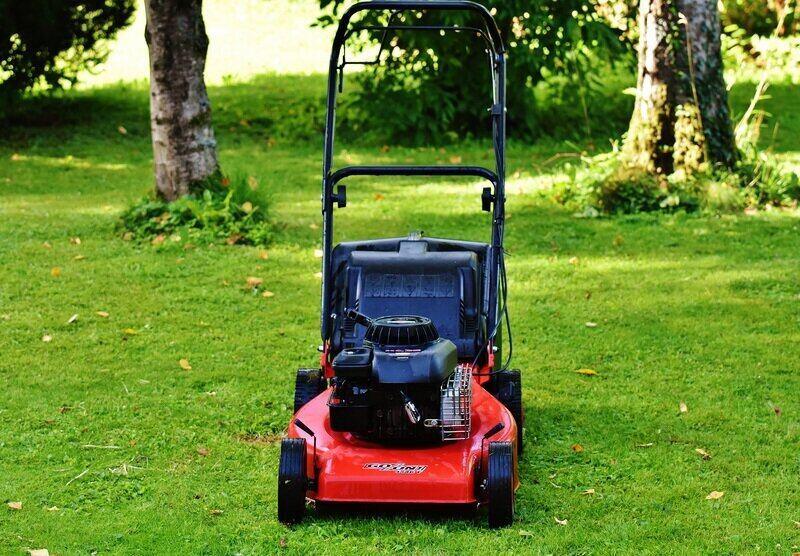
Your lawn’s health is influenced by how you cut it. While many believe that mowing grass as short as possible is the best approach, it may not be suitable for all grass types. Cutting it too short can result in weakening and increase the likelihood of lawn diseases.
However, if you let it grow too long, it can attract pests and irritate your neighbors. To determine the ideal grass height for your lawn, you need to consider the species. For the most common cool-season and warm-season grasses in South Carolina, here are the recommended mowing heights:
| Grass Type | Recommended Mowing Height |
| Bermudagrass | 1 – 2 inches |
| Carpetgrass | 1 – 2 inches |
| Centipedegrass | 1.5 – 2 inches |
| St. Augustinegrass | 2.5 – 4 inches |
| Tall fescue | 2 – 4 inches |
| Zoysiagrass | 1 – 2.5 inches |
Timing is crucial when it comes to mowing your lawn in the spring. Wait until your grass has grown to a minimum of 2 inches in height before you start mowing. This period will provide ample time for the roots to establish a stable foundation.
Additionally, you should pay attention to the temperature before mowing. It’s best to wait until the daily low temperature is well above 40 degrees Fahrenheit. Usually, this occurs in March or April in South Carolina. To achieve the best results, keep these lawn mowing tips in mind:
- Avoid mowing wet grass.
- Don’t let grass clippings accumulate to more than an inch.
- It’s not advisable to cut more than a third of the grass height at once. If the grass is 3 inches tall, don’t mow it more than an inch.
- Ensure your lawn mower’s blades are sharp.
- Mow your lawn in different directions.
Pro Tip: Cool-season grasses like tall fescue go dormant as the temperature rises, so they do not require mowing in the spring and summer.
8. Overseed To Improve Lawn Thickness
For homeowners who prioritize the maintenance of their lawn, overseeding may be a familiar term. This technique involves sowing new grass seed onto an existing lawn to address sparse or patchy areas.
The optimal time to overseed a lawn is during the active growing season, which typically takes place during spring. South Carolina can accommodate both warm-season and cool-season grasses since it falls within a turf transition zone.
Perform overseeding for warm-season grasses in the spring. During this time, they are preparing for their growing season and can benefit from the additional nutrients. In contrast, if you have a lawn with cool-season grass, like tall fescue, it’s best to wait until fall before overseeding.
In the following chart, you can find the best planting times for the most prevalent warm-season grasses in South Carolina. These recommended times are based on average daily temperatures and weather conditions.
| Grass Type | Best Daily Low – High Temperatures for Planting | Best Time to Plant Seeds in South Carolina |
| Bermudagrass | 75 – 80 | May – June |
| Centipedegrass | 70 – 90 | May – June |
| Zoysiagrass | 80 – 95 | Late May – July |
After overseeding your lawn, you should adjust your lawn maintenance routine to accommodate the newly planted grass. Although the grass may be the same species as the established lawn, it requires extra care to grow and thrive. Adequate fertilization and watering are essential for ensuring the new grass grows thick and healthy.
Pro Tip: Choosing between overseeding and weed control can be a tricky decision in the spring. If you apply herbicides to prevent weed germination, it also can prevent your new grass from growing. So, consider the pros and cons carefully and decide which aspect is more important for your lawn.
9. Control and Prevent Weed Invasion
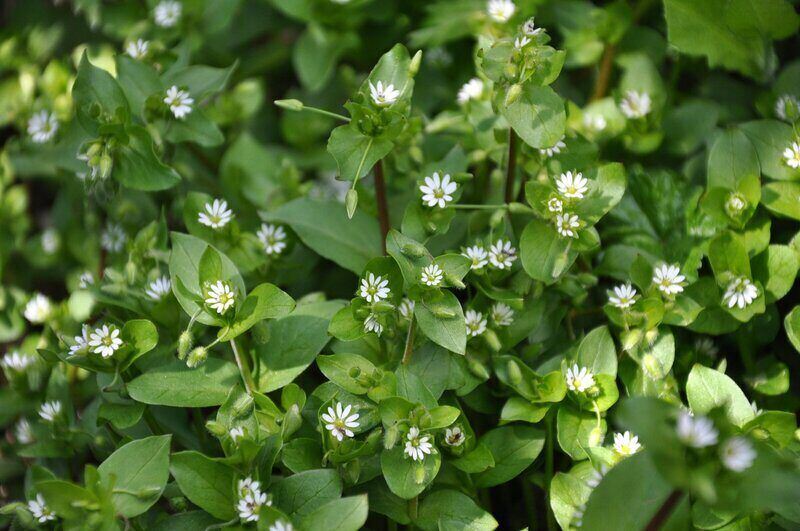
Photo Credit: Lazaregagnidze / Wikimedia Commons / CC BY-SA 4.0
Maintaining a lush and healthy lawn requires a proactive approach to weed control that prevents them from taking root and spreading. To keep your lawn free from weeds, focus on the fundamentals of lawn care, including proper watering, dethatching, aeration, regular mowing, and overseeding. These basics can help prevent weed problems before they even start.
If you’re considering using pre-emergent herbicides on your bermudagrass, centipedegrass, Zoysiagrass, or tall fescue, the best time to apply is mid-March. The second application should be around eight to 10 weeks later. Keep an eye on the air temperature, waiting until it hits 65-70 degrees Fahrenheit for at least four consecutive days before applying.
If you miss the window for pre-emergent herbicide and notice weeds starting to grow, you can consider using a post-emergent herbicide. However, you need to wait until after the grass has finished greening up before applying.
Pro Tip: If you plan on overseeding while using pre-emergent herbicides, make sure to time the overseeding at least eight weeks after applying the herbicide.
10. Fertilize To Support Healthy New Growth
A thriving lawn requires more than just nourishment. The timing and application of the right fertilizer can provide your lawn with the additional support it requires to grow strong and become lush.
When to Fertilize Your Lawn
Timing is crucial even when it comes to fertilizing your South Carolina lawn. The optimal period to start fertilizing is in late spring, once the grass has resumed active growth and regained its vibrant green color. The initial round of fertilization usually takes place in May, but it’s critical to hold off on the application until the grass has started growing again. Otherwise, the fertilizer won’t have the desired effect.
Type of Fertilizer To Use
Use slow-release nitrogen fertilizer to promote the consistent and steady growth of your lawn throughout the season. Although fast-release fertilizers can speed up growth, they can cause unsustainable growth or even burn the grass due to too much nitrogen being applied too quickly. It’s best to take a slow and steady approach when fertilizing your lawn.
How to Fertilize Your Lawn
Achieving a green, lush lawn requires more than just dumping fertilizer onto your lawn. To avoid uneven growth and unsightly streaks, it’s vital to use a spreader when fertilizing your lawn. This ensures that the fertilizer is evenly distributed and minimizes the risk of overfertilization, which can be detrimental to your grass.
Pro Tip: It’s a common misconception that applying more fertilizer will result in faster growth. However, overfertilizing your lawn can lead to weakened grass and other issues. Applying fertilizer too early won’t make your grass grow any faster. Therefore, it’s important to be patient and fertilize at the right time for optimal results.
11. Kill Lawn Pests Before They Overrun Your Yard
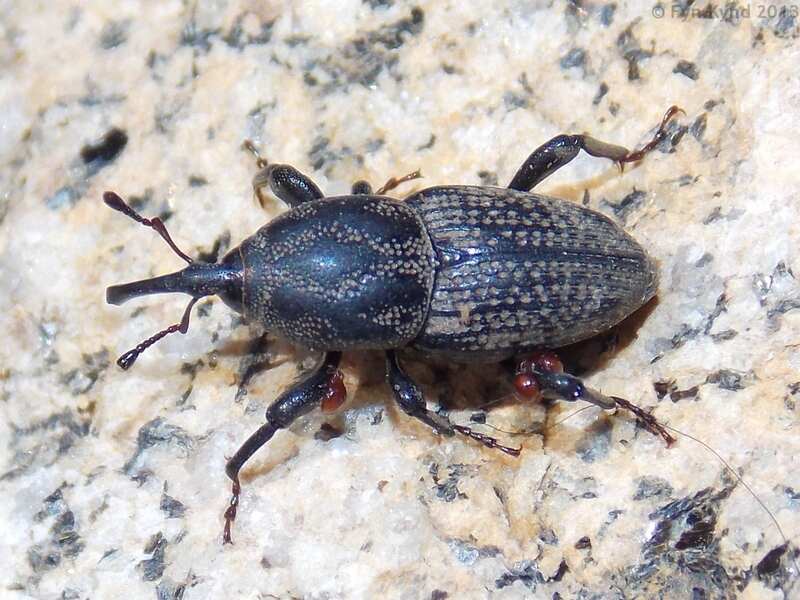
Photo Credit: Fyn Kynd / Flickr / CC BY 2.0
As the spring season arrives in South Carolina, be proactive in preventing lawn pests from causing damage to your yard.
It’s not just the Easter bunny that scatters eggs on your lawn this season. Many pests lay their eggs during this time, and by the time summer arrives, these eggs will have hatched into larvae that can quickly mature into adult pests. Taking action early on is crucial in preventing a pest infestation and ensuring the health of your lawn.
In spring, you may come across various pests that can harm your lawn, including:
| Grass Type | Common Spring Lawn Pests |
| Bermudagrass | Bermudagrass mites, grubs, nematodes, bermudagrass scales, mole crickets, and ground pearls |
| Carpetgrass | Armyworms, mole crickets, nematodes, sod webworms, and white grubs |
| Centipedegrass | Grubs, spittlebugs, ground pearls, nematodes, and mole crickets |
| St. Augustinegrass | Armyworms, billbugs, chinch bugs, grub worms, mole crickets, and sod webworms |
| Tall fescue | No lawn pest issues in the spring (March through May) |
| Zoysiagrass | Mole crickets, ground pearls, nematodes, and grubs |
Pro Tip: Refrain from using pesticides when dealing with these pests. Instead, it’s best to prevent infestations by keeping your lawn healthy and free from excessive moisture and thatch. If you find pests, use targeted pesticides that won’t harm beneficial insects.
12. Treat Lingering Lawn Diseases Before New Growth Starts
Springtime can be a challenging season for lawn enthusiasts, especially for those with neglected or weathered lawns. The hot and humid climate of South Carolina can provide a favorable environment for various fungi that can cause lawn diseases. These diseases often result in unsightly dead patches or discoloration, which can quickly spread during the growing season.
It’s essential to act quickly to address these diseases. Fortunately, Clemson University has compiled a list of common turfgrass diseases that South Carolina homeowners should be aware of. By identifying the specific disease affecting your lawn, you can take appropriate steps to prevent further spread and ensure your lawn remains healthy and vibrant throughout the season.
| Grass Type | Common Spring Lawn Diseases |
| Bermudagrass | Brown patch, dollar spot, and spring dead spot |
| Carpetgrass | Brown patch |
| Centipedegrass | Brown patch |
| St. Augustinegrass | Fairy rings |
| Tall fescue | No lawn disease issues in the spring (March through May) |
| Zoysiagrass | Brown patch and dollar spot |
Brown Patch (Large Patch)
What to look for:
- Leaf spots that are either black or reddish-brown
- Patches of gray or brown grass that have an irregular or circular shape and vary from 5 inches to 25 feet in diameter
- Orange grass or thin, smoke-colored rings surrounding the affected spot
How to treat brown patch:
- Use fungicides containing triadimefon, thiophanate-methyl, propiconazole, PCNB, myclobutanil, or maneb to stop the disease from spreading and eliminate the fungus. While the disease is active, avoid using nitrogen. To regulate low pH levels, add lime to the soil. Also, take steps to remove dew from the grass in the morning, water the lawn early in the day, increase sunlight exposure, and remove thatch buildup.
Dollar Spot
What to look for:
- Circular patches of grass that appear sunken, discolored, and straw-like in color, with a size and shape similar to a dollar coin
- Fuzzy, white-colored mold may develop on the surface of the affected grass in the early morning
- Individual grass blades may show straw-colored, yellowish-green, or reddish-brown spots
How to treat dollar spot:
- To combat serious cases, use fungicides that contain propiconazole, myclobutanil, or triadimefon. Mow your lawn regularly while avoiding cutting it too short. Do not overwater your lawn, and irrigate in the morning to allow the grass ample time to dry out before nightfall. Apply nitrogen fertilizer in the spring to encourage growth and prevent dollar spot. Additionally, limit thatch buildup and remove morning dew from the grass.
Fairy Rings
What to look for:
- If you notice an arc or ring of dead grass surrounded by healthy, green grass, it could be an indication of fairy rings. Sometimes, a white fungal growth may be visible in the soil, or there may be a dark green arc or ring in the grass.
How to treat fairy rings:
- Eliminating fairy rings can be challenging because the fungi that cause them have deep roots, and fungicides may not always be effective. A recommended solution is to excavate one foot of soil in and around the affected area. After removing the soil, you can then reseed or resod the impacted area to level out the lawn.
Spring Dead Spot
What to look for:
- Delayed green-up
- Patches of dead grass
- Light brown or straw-colored spots
- Grass that appears wilted and dry
- White fungal growth on the dead grass or in the thatch layer
How to treat spring dead spot:
- Maintain your soil pH in the range between 5.8 and 6.2. Potassium levels should be kept at the higher end of the recommended range in your soil test results. If your lawn needs it, consider dethatching in May and aerating annually. Also, water your lawn infrequently and always in the morning. In October, apply three fungicide treatments to keep any potential fungi at bay.
FAQ About Spring Lawn Care in South Carolina
The answer will depend on the specific needs of your lawn. In general, it is recommended to apply a slow-release fertilizer with a higher nitrogen content in the spring to encourage growth and green-up. Follow the application instructions carefully and don’t overfertilize, as this can lead to nutrient runoff and pollution of waterways.
Additionally, consider factors like soil pH and any specific nutrient deficiencies that may need to be addressed with targeted fertilizers or soil amendments. A soil test can provide valuable information to guide your fertilization plan.
The time it takes for grass to grow in South Carolina can vary depending on several factors, including the type of grass, soil conditions, and climate. Cool-season grasses like tall fescue can germinate in seven to 10 days and reach maturity in about four to six weeks.
On the other hand, warm-season grasses like bermudagrass and Zoysiagrass may take longer to establish, with germination taking 10-14 days and maturity reached in 60-90 days.
There are several options for top-dressing your lawn, including using compost, sand, or a mixture of the two. You also can use specialized top-dressing soil mixes that contain a blend of sand, peat, and compost.
The type of top dressing you choose will depend on your lawn’s specific needs, such as improving drainage, adding nutrients, or leveling out uneven areas. Choose wisely and apply it properly to avoid damaging the grass.
Get Your Lawn Ready for the Season Ahead
Maintaining a healthy and vibrant lawn is not only aesthetically pleasing, but it also provides numerous benefits to your well-being and the environment. With these 12 spring lawn care tips specifically tailored for Charleston, Rock Hill, Mount Pleasant, Columbia, Myrtle Beach, and other cities across South Carolina, homeowners can ensure their lawns are well-prepared to thrive throughout the growing season.
So, take advantage of the spring season and start implementing these tips. Don’t hesitate to reach out to a lawn care pro for expert help in achieving the lawn of your dreams.
Main Image Credit: Beaufort, South Carolina / Ken Lund / Flickr / CC BY-SA 2.0